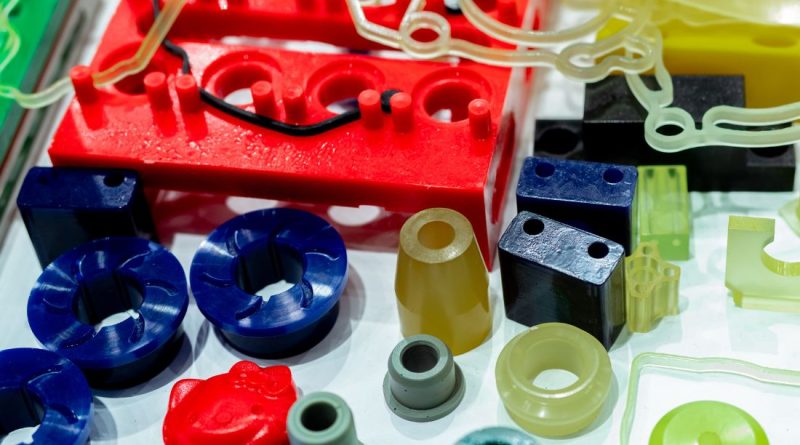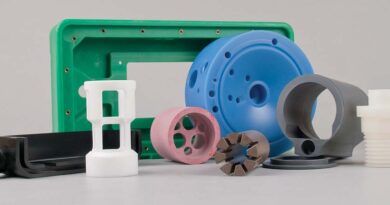The Advantages of Using Stamped Plastic Parts in Manufacturing
The manufacturing landscape is continuously evolving, with new technologies and methods emerging to enhance production efficiency and product quality. One significant advancement in this realm is the utilization of stamped plastic parts. But what exactly are stamped plastic parts, and why should manufacturers consider them? This article explores this innovative method, highlighting its numerous advantages, including cost-effectiveness, durability, design flexibility, and sustainability, making it a game-changer for manufacturers across various industries.
Understanding Stamped Plastic Parts: A Manufacturing Game Changer
What Are Stamped Plastic Parts?
Stamped plastic parts are components created through the process of plastic stamping, where sheets of thermoplastic materials are shaped and formed into specific designs using a stamping machine. This process typically involves the use of dies that apply pressure to the plastic sheets, effectively cutting and shaping them into desired forms. The result is a high-volume production of precise, consistent parts that meet the specifications required by various applications.
The Stamping Process Explained
The stamping process can be broken down into several key stages:
Material Selection: Various types of thermoplastics can be used, including ABS, polycarbonate, and polypropylene, each offering unique properties tailored to specific applications.
Die Creation: Custom dies are designed to accommodate the specific dimensions and features of the parts being produced. This initial investment is crucial for ensuring accuracy and efficiency.
Stamping: The plastic sheets are fed into a stamping machine, where they are subjected to high pressure from the dies, shaping them into the final product.
Finishing: After stamping, parts may undergo additional processes such as trimming, assembly, or surface treatment to enhance their performance and aesthetics.
Why It Matters
The ability to produce high-quality stamped plastic parts quickly and efficiently has made plastic stamping a preferred choice in industries such as automotive, electronics, and consumer goods. As manufacturers look for ways to improve productivity while maintaining quality, understanding the advantages of stamped plastic parts becomes essential.
Cost-Effectiveness of Plastic Stamping in Production
Lower Stamped Plastic Costs
One of the primary advantages of using stamped plastic parts is their cost-effectiveness. The manufacturing process allows for the efficient use of materials, minimizing waste. Thermoplastics are typically less expensive than metals and can be sourced at a lower cost, significantly reducing overall production expenses.
Reduced Labor Costs
The automation of the stamping process means that fewer labor hours are required compared to traditional manufacturing methods. This efficiency leads to lower labor costs and faster production times. Manufacturers can produce large quantities of parts in a shorter time frame, ultimately enhancing their bottom line.
Economies of Scale
Plastic stamping is particularly beneficial for high-volume production runs. Once the initial investment in die creation is made, the cost per unit decreases as production scales up. This makes stamped plastic parts a highly economical choice for businesses looking to meet high demand without sacrificing quality.
Durability and Performance: Why Choose Stamped Plastic?
Strength and Resilience
Stamped plastic parts are known for their strength and durability. Many thermoplastics used in stamping possess excellent impact resistance and can withstand harsh environmental conditions, making them suitable for various applications. For instance, ABS plastic is often utilized in automotive parts due to its toughness and ability to resist cracking.
Consistency and Quality
The precision of the stamping process ensures that each part produced is consistent in quality and performance. This uniformity is crucial for industries where even minor deviations can lead to product failure. By utilizing stamped plastic, manufacturers can maintain high standards of quality control, reducing the likelihood of defects and warranty claims.
Performance Under Stress
Many stamped plastic parts are designed to handle significant stress and load without deforming or breaking. For example, components used in machinery and automotive applications often require materials that can endure pressure and temperature fluctuations. Stamped plastics can be engineered to meet these demanding performance criteria, ensuring reliability and safety.
Real-World Applications
In the aerospace industry, stamped plastic parts are used in components such as cabin interiors and paneling, where weight reduction is critical. The combination of strength and lightweight properties of plastics makes them an ideal choice for enhancing fuel efficiency without compromising safety. Interviews with industry experts confirm that the shift to stamped plastic has been transformative in these sectors, allowing for innovative designs and improved performance.
Design Flexibility: Customization Opportunities with Stamped Plastic Parts
Tailored Designs for Unique Needs
One of the standout features of plastic stamping is its ability to produce highly customized parts. Manufacturers can design dies to create intricate shapes and features that meet specific requirements. This flexibility allows companies to innovate and differentiate their products in a competitive marketplace.
Rapid Prototyping
The stamping process also supports rapid prototyping, enabling manufacturers to quickly develop and test new designs. This speed is essential for staying ahead of market trends and responding to consumer demands. By using stamped plastic parts, businesses can iterate on designs faster, reducing time-to-market for new products.
Multi-Functional Capabilities
Stamped plastic parts can incorporate multiple functionalities into a single component. For instance, a part may serve as both a structural element and an aesthetic cover, reducing the need for additional components and simplifying assembly. This multi-functional approach can lead to further cost savings and efficiency in production.
Enhancing Aesthetics
In addition to functional benefits, plastic stamping allows for a variety of surface finishes and colors, enabling manufacturers to enhance the visual appeal of their products. Whether through texturing, painting, or adding logos, the aesthetic possibilities with stamped plastic are virtually limitless.
Comparative Analysis: Stamped vs Traditional Manufacturing Methods
Stamped Plastic vs Injection Molding
While both stamped plastic and injection molding are popular manufacturing methods, they offer distinct advantages and disadvantages. Injection molding provides excellent detail and is ideal for complex shapes, but it often requires a higher initial investment and longer lead times. In contrast, stamping is more cost-effective for high-volume production and allows for quicker turnaround times.
Stamped Plastic vs Metal Stamping
When comparing stamped plastic to traditional metal stamping, plastic offers several benefits, including weight reduction and resistance to corrosion. While metal parts can provide superior strength in certain applications, the versatility and cost savings of stamped plastic make it an attractive alternative for many industries.
Speed and Efficiency
In terms of speed, stamped plastic parts can be produced at a much faster rate than their metal counterparts. The rapid production capabilities of plastic stamping allow manufacturers to respond quickly to market demands and reduce lead times significantly.
Environmental Considerations
From an environmental perspective, stamped plastic parts often have a smaller carbon footprint compared to traditional metal stamping. The lower energy consumption during the stamping process, combined with the ability to recycle thermoplastics, makes this method a more sustainable choice for manufacturers looking to reduce their environmental impact.
Sustainability Benefits of Using Stamped Plastic in Manufacturing
Reduced Waste Generation
The plastic stamping process generates significantly less waste compared to traditional manufacturing methods. The precise nature of the stamping process ensures that material is utilized efficiently, leading to lower scrap rates and reduced disposal costs.
Recyclability of Materials
Many thermoplastics used in stamping are recyclable, making them an environmentally friendly option. Manufacturers can implement recycling programs to repurpose scrap materials, further minimizing waste and promoting sustainability in their operations.
Energy Efficiency
The energy consumption associated with plastic stamping is generally lower than that of metal stamping and other traditional manufacturing methods. This efficiency not only reduces operational costs but also contributes to a smaller carbon footprint, aligning with global efforts to promote sustainability in manufacturing.
Supporting a Circular Economy
By choosing stamped plastic parts, manufacturers can play a role in promoting a circular economy. The ability to recycle materials and reduce waste supports sustainable production practices that benefit both businesses and the environment.
| Advantage | Description | Industry Applications | Environmental Impact |
| Cost-Effectiveness | Lower material costs and reduced labor costs due to automation lead to significant savings. | Automotive, Electronics | Reduced waste generation and lower operational costs |
| Durability and Performance | Stamped plastic parts exhibit high strength and resilience, suitable for demanding applications. | Aerospace, Machinery | Long-lasting materials reduce need for replacements |
| Design Flexibility | Customizable designs and rapid prototyping capabilities allow for innovative products. | Consumer Goods, Medical Devices | Supports sustainable design through efficient use of materials |
| Speed and Efficiency | Faster production rates than traditional methods enable quick market response. | High-Volume Manufacturing | Lower energy consumption contributes to sustainability |
| Recyclability | Many thermoplastics are recyclable, promoting a circular economy in manufacturing. | Various Industries | Minimizes waste and encourages recycling initiatives |
The advantages of using stamped plastic parts in manufacturing are clear. From cost-effectiveness and durability to design flexibility and sustainability, the benefits make this method a compelling choice for modern manufacturers. As industries continue to evolve, the adoption of plastic stamping will likely increase, driven by the need for efficient, high-quality, and environmentally responsible manufacturing solutions.
As you consider the future of your manufacturing processes, exploring the potential of plastic stamping could lead to significant improvements in both productivity and profitability. Embracing this innovative approach may very well position your business at the forefront of the manufacturing landscape.

